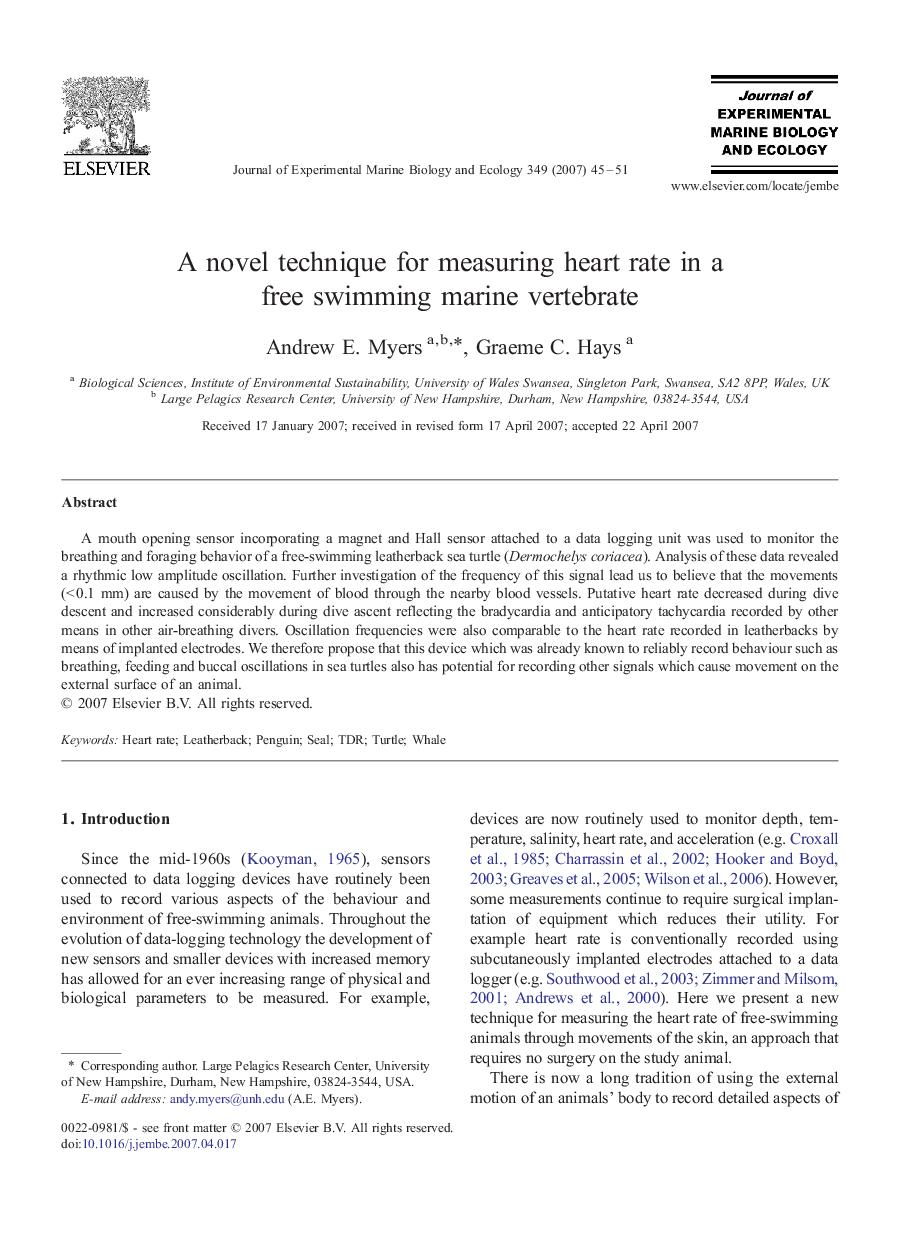| Article ID | Journal | Published Year | Pages | File Type |
|---|---|---|---|---|
| 4397704 | Journal of Experimental Marine Biology and Ecology | 2007 | 7 Pages |
A mouth opening sensor incorporating a magnet and Hall sensor attached to a data logging unit was used to monitor the breathing and foraging behavior of a free-swimming leatherback sea turtle (Dermochelys coriacea). Analysis of these data revealed a rhythmic low amplitude oscillation. Further investigation of the frequency of this signal lead us to believe that the movements (< 0.1 mm) are caused by the movement of blood through the nearby blood vessels. Putative heart rate decreased during dive descent and increased considerably during dive ascent reflecting the bradycardia and anticipatory tachycardia recorded by other means in other air-breathing divers. Oscillation frequencies were also comparable to the heart rate recorded in leatherbacks by means of implanted electrodes. We therefore propose that this device which was already known to reliably record behaviour such as breathing, feeding and buccal oscillations in sea turtles also has potential for recording other signals which cause movement on the external surface of an animal.
